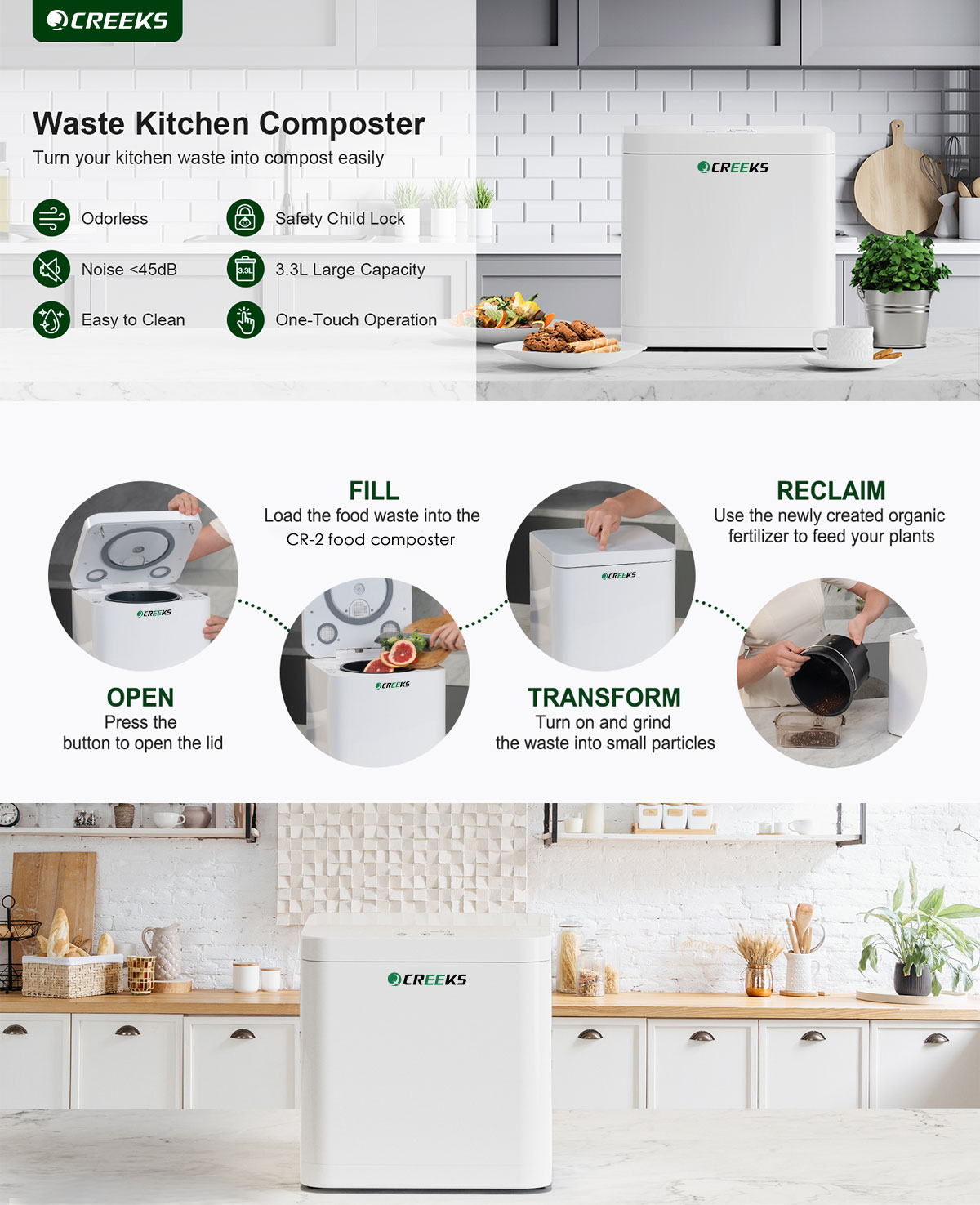As the world moves toward sustainable living, reducing food waste has become a priority. Traditional composting is effective but can be time-consuming and impractical for urban dwellers. Enter the electric composter—a modern solution that accelerates decomposition, minimizes odors, and converts food scraps into nutrient-rich compost with minimal effort.
How Does an Electric Composter Work?
Electric composters utilize heat, aeration, and mechanical mixing to rapidly break down organic waste. Unlike traditional composting, which can take months, these devices produce compost in as little as 24 hours to a few weeks, depending on the model.
Key Features
- Grinding Mechanism – Crushes food scraps into smaller particles for faster decomposition.
- Heating Element – Maintains optimal temperatures (typically 120–160°F) to accelerate microbial activity.
- Ventilation & Odor Control – Built-in filters reduce smells, making them suitable for indoor use.
- Automated Mixing – Ensures even breakdown of materials.
Benefits of Using an Electric Composter
- Speed – Converts waste into compost in hours instead of months.
- Convenience – Ideal for apartments, offices, and homes with limited outdoor space.
- Odor-Free – Advanced filters prevent unpleasant smells.
- Reduces Landfill Waste – Diverts food scraps from landfills, cutting methane emissions.
- Produces High-Quality Compost – Creates nutrient-rich fertilizer for gardens and houseplants.
What Can You Compost in an Electric Composter?
Most electric composters handle:
✅ Fruit & vegetable scraps
✅ Coffee grounds & filters
✅ Eggshells
✅ Small amounts of bread & grains
Avoid:
❌ Meat & dairy (in most models)
❌ Oily foods
❌ Large bones
Electric composters are revolutionizing home sustainability by making composting effortless and efficient. Whether you live in a city apartment or a suburban home, these devices offer a practical way to reduce waste and contribute to a greener planet.
Would you try an electric composter? Let us know!

